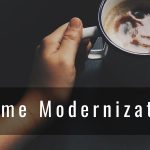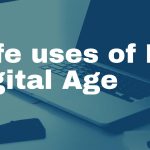MagRabbit offers application migration to the Salesforce platform. We understand that data security, business continuity are the top priorities. Your legacy applications can be either partly or fully migrated onto the Salesforce platform.
It is important to take the highest care to every piece of data while doing the migration. So, leveraging the Salesforce security model, we re-structure the legacy apps’ data security into sets of Sharing Rules, Record-Level, and Object-Level Security. Data flowing through their stages are strictly following the security business rules.
For the application migration process, MagRabbit conducts into 4 phases: Understanding, Crystalizing, Operationalizing, and Institutionalizing.
- UNDERSTANDING
- We engage end users and technical team in Knowledge Transfer meetings in order to collect the apps’ artifacts and documentation as well as gather existing problems and concerns of the current systems. This also includes reverse engineering work so that every detail for the legacy applications can be documented and clarified.
In this Understanding phase, it is a good chance to have the work process defined between the two technical teams: one from the legacy application and one from Salesforce migration. Then, as teams start to engage closely, we can simplify the process of documentation.
CRYSTALIZING
In the initial kickoff meeting, we co-create a product backlog to ensure all stakeholders seeing the same vision of what the next generation of the apps would be like on the Salesforce platform. We tactically dig deeper into the apps’ existing source code so that all technical details can be confirmed and clarified. We are all aware that among common business rules, the source code also contains much more than the initial implementation which might sometimes be neglected to mention in the documentation.
Sequentially, we define what to change, what not to change. Then we classify those as feature requests, improvements, or enhancements and then assemble them into the Work Breakdown Structure. In order to keep stakeholders engaged, we can have them actively contribute to the Product Backlog and review business rules clarification.
- OPERATIONALIZING
- This is where all the coding, testing, deploying types of tasks coming in. We work on creating a source code package with Salesforce Lightning platform to reflects the core features and improvements agreed to be included in the new apps. Salesforce Migration Ant or Change Sets will then be used as a tool to migrate metadata for the apps. Then, we import re-structured existing data onto the Salesforce apps. With crystalized knowledge of the applications, we can include technical improvements or features enhancements in this phase.
Every application in the Salesforce platform should always take advantage of with the nice and real-time Reports & Dashboards. On Salesforce, data can be viewed and updated declaratively from List Views or Record Details page. Plus, the business processes are typically represented into Process Builder, Workflow Rules, or in Lightning Flows.
- INSTITUTIONALIZING
- Applications in the Salesforce platform can be grouped as a package which includes all related metadata. Sets of aura documentation, objects descriptions which are developed in the previous phases are finalized in this Institutionalizing phase
During the very initial Production (Go-Live) period, L1 & L2 Support Teams closely manage the data flow and critical use cases. Then, the process of Business As Usual, can be applied for the continuous improvements and quick delivery for any technical debt or enhancements of the migrated salesforce applications.







